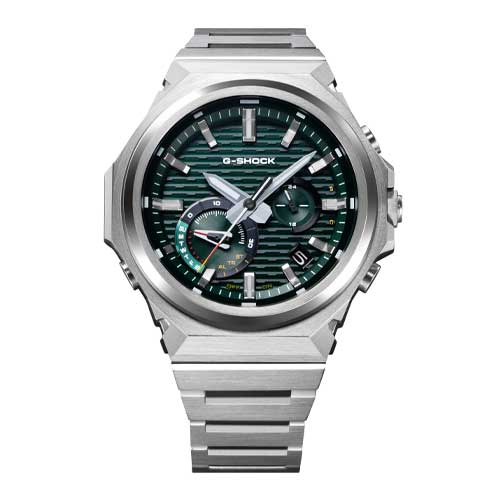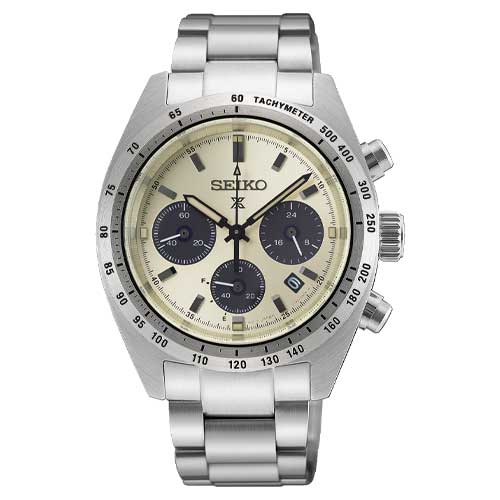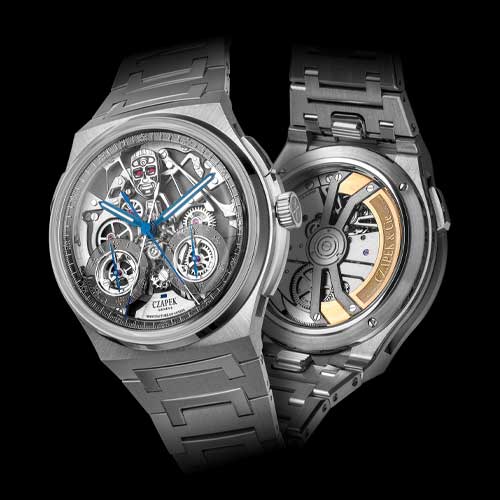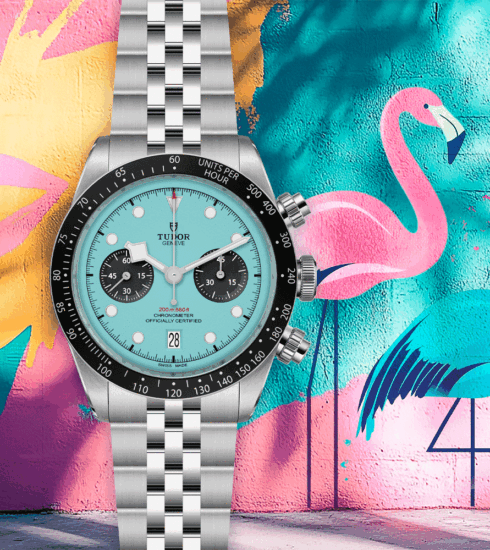Chronograph: Timekeeping innovations from Union Glashütte, TAG Heuer, G-SHOCK, Seiko, Omega, Hanhart and Czapek
Two pushers, subdials, numerous hands – that's how most chronographs can be described. But not all chronographs are created equal. Regardless of the design, the stopwatch enjoys unbroken popularity.
Besides the classic function of telling time, a chronograph can be used to measure time intervals. Be honest, fellow chronograph owners: How often do you actually use this function? And how familiar are you with its operation? Regardless, it's always good to know you're wearing a highly functional watch on your wrist.
Union Glashütte: Belisar Chronograph Limited Edition Speedster 2025

Movement: UNG-27.S1 (Automatic)
Power reserve: 65 hours
Functions: Chronograph, hours, minutes, small seconds, stop-seconds function, date (date correction via corrector at 10 o'clock)
Materials: Stainless steel, rubber, calfskin
Dimensions: 44 x 15 mm
Watertightness: 10 bar
Dial: blue-grey
Special features: Limited to 388 copies, special limited edition box
RRP: 3.300 €
Start, Stop, Reset
The chronograph function of an analog watch always follows the principle Start, Stop, Reset One pusher starts and stops the stop process, the other resets the stop hand to zero. Both push buttons They are usually located on the right side of the case at 2 and 4 o'clock. A central hand typically indicates the elapsed seconds.
There are also so-called MonopusherThese watches operate with a single pusher for the chronograph function. This single pusher is usually located in the crown, meaning such a watch requires only one control element. These types of timepieces are rarer and appear more elegant than classic chronographs with two pushers.
The history of the chronograph
The term chronograph is derived from ancient Greek and means "Time writer" (derived from chronos (time) and graphein (to write, to draw).
In 1776, Jean Moïse Pouzait developed an early precursor in Geneva in which the seconds hand could be stopped separately. At that time, however, the entire movement stopped and there was no zero-reset function – it was not called a chronograph.
This also applies to the “time-measuring clock” of the Belgian watchmaker Hubert Sarton (1748–1828) and the various options for displaying sixtieths of a second by watchmaker and inventor John Arnold (1736–1799).
The term chronograph was coined by Nicolas Mathieu Rieussec (1781–1866). He invented a device with two rotating discs and a pointer-based ink mechanism that marked time intervals.
Following a successful functional test during a horse race in Paris on September 1, 1821, Rieussec's time recorder was officially recognized as a seconds chronograph by the Royal Academy of Sciences.
Automatic and quartz chronographs
Regarding the first Chronographs with automatic movement Incidentally, three protagonists were engaged in a head-to-head race in 1969: the Chronomatic consortium (Heuer, Breitling, Hamilton-Büren, Dubois-Dépraz), Zenith and Seiko.
TAG Heuer: Carrera Extreme Sport Collection

Movement: Caliber TH20-00 (automatic)
Power reserve: 80 hours
Functions: Chronograph, hours, minutes, small seconds, date, tachymeter
Materials: Rose gold, titanium, rubber
Dimensions: 44 x 15.1 mm
Watertightness: 10 bar
Dial: Skeletonised
RRP: 22.300 €
The first Quartz chronograph It appeared only a few years later. In 1975, Seiko first presented a digital time recorder, followed in 1983 by the first analog quartz chronograph.
G-SHOCK: GST-B1000D

Movement: Compact module with Tough Solar technology and smartphone link via Bluetooth (quartz)
Power reserve: 5 months (with normal use without light exposure after charging),) 18 months (in complete darkness with energy saving function activated after a full charge)
Functions: Stopwatch, flight log mode, timer, automatic calendar, daily alarms, LED lighting
Materials: carbon-reinforced stainless steel resin housing
Dimensions: 46.9 x 44.2 x 11.6 mm
Watertightness: 20 bar
Dial: blue, green, black, Kigumi pattern
Special features: Automatic synchronization with smartphone via app
RRP: 399 €
Seiko: Prospex Speedtimer Solar Chronograph SSC959

Movement: Solar Caliber V192 (Quartz)
Power reserve: up to 6 months
Functions: Stopwatch, split time, 24-hour display, hours, minutes, small seconds, date, tachymeter
Materials: Stainless steel
Dimensions: 39 x 13.3 mm
Watertightness: 10 bar
Dial: champagne
Special features: Limited to 2,700 numbered copies, specially designed box
RRP: 860 €
The sub-dials
If a chronograph is not currently running, you can tell if it is running by looking at the small seconds subdial. This is located on one of the three subdials of a chronograph.
The other sub-dials – often also called Counters, counters or totalizers These are called chronographs – they record the number of minutes and hours. This allows many chronographs to measure time periods of up to 12 hours.
In timekeepers with only two auxiliary dials, one is for the small seconds and the other for timing periods of 30 or 60 minutes.
Omega: Speedmaster Milano Cortina 2026

Movement: Omega 3330 (automatic)
Power reserve: 52 hours
Functions: Chronograph, tachymeter, hours, minutes, small seconds, date
Materials: Stainless steel
Dimensions: 38 x 45.2 x 14.75 mm
Watertightness: 10 bar
Dial: white
Special features: Design inspired by the Milan-Cortina 2026 Winter Olympics
RRP: 6.600 €
Flyback and rattrapante: Chronographs with special functions
Longines claims to have invented the flyback function. In 1925, the St. Imier-based brand presented its first model with a flyback mechanism, and the corresponding patent was filed in 1935 and registered on June 16, 1936. Unlike a conventional chronograph, whose second hand must be stopped, reset, and restarted, a flyback chronograph allows the hand to jump to zero instantly with a single press, restarting the timing process.
This allows, for example, pilots to measure flight stages practically and quickly one after the other, and facilitated navigation, especially in the pre-digital age.
Hanhart: 417 ES Mocha Flyback Date

Movement: AMT5100 M Manufacture AMT by Sellita (manual winding)
Power reserve: 58 hours
Functions: Chronograph, flyback, 30-minute counter, central stop-seconds, stop-seconds function, hours, minutes, small seconds, date
Materials: Stainless steel, calfskin
Dimensions: 42 x 49.75 x 13.5 mm
Watertightness: 10 bar
Dial: Mocha brown
Special features: limited to 200 copies
RRP: 2.690 €
The Rattrapante chronograph A split-seconds chronograph – also called a double chronograph – allows for the timing of laps or intermediate times and is therefore more commonly found on racetracks. The term "rattrapante" comes from the French word "rattraper," meaning "to catch up" or "to catch up." This refers to a second stop-seconds hand responsible for timing intermediate times.
Czapek: Antarctique Rattrapante RUR

Movement: SXH6 (automatic)
Power reserve: 60 hours
Functions: Rattrapante chronograph, intermediate time, hours, minutes, small seconds
Materials: Stainless steel
Dimensions: 42.5 x 15.3 mm
Watertightness: 12 bar
Dial: grey-metallized sapphire crystal dial
Special features: Chronograph status indicator in the robot head at 12 o'clock, monopusher, limited to 77 pieces.
RRP: 74.600 €
When you start a rattrapante chronograph as usual, the two superimposed stop-seconds hands begin to run. Usually, the second hand can be disengaged using a third pusher, so that only one hand continues to run. If this pusher is pressed again, the stopped hand catches up with the still-running hand.
This double-hand or rattrapante mechanism dates back to 1831 and the Austrian watchmaker and employee of Breguet, Joseph Thaddäus Winnerl.






